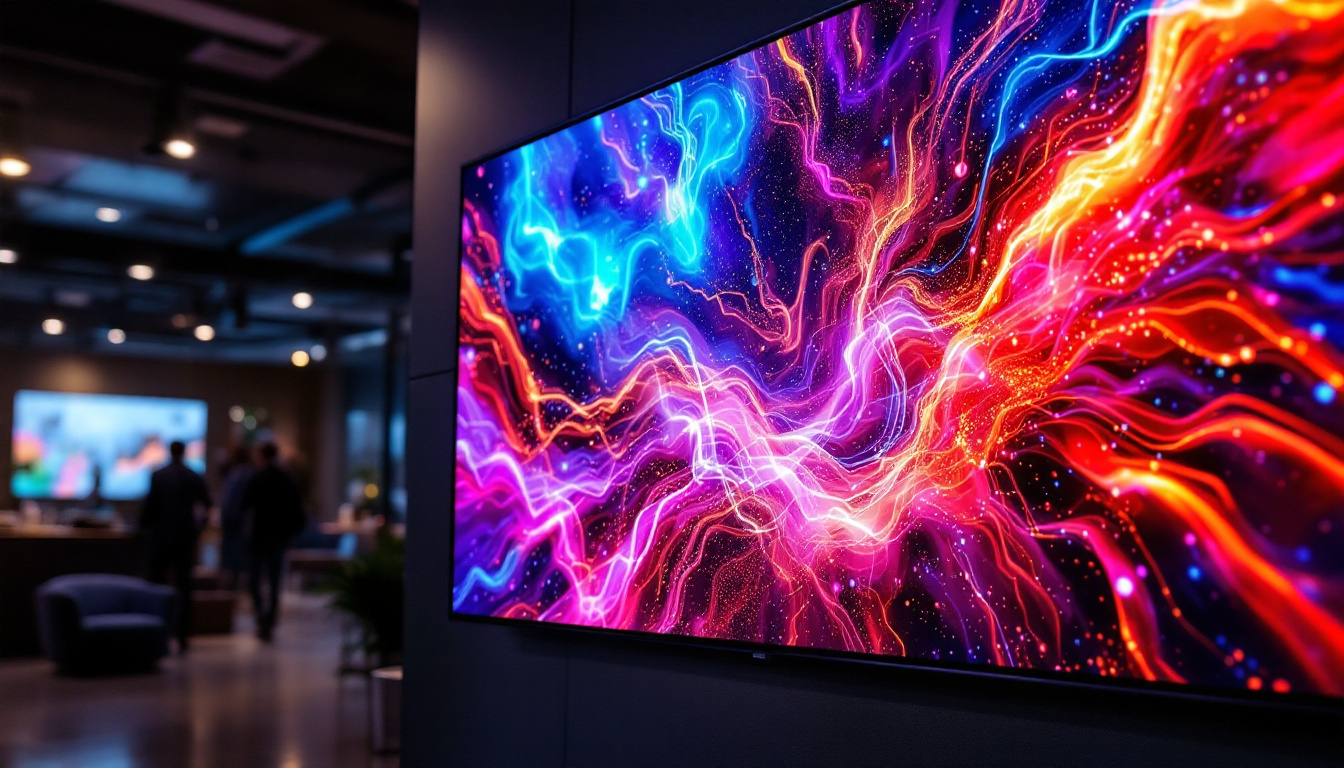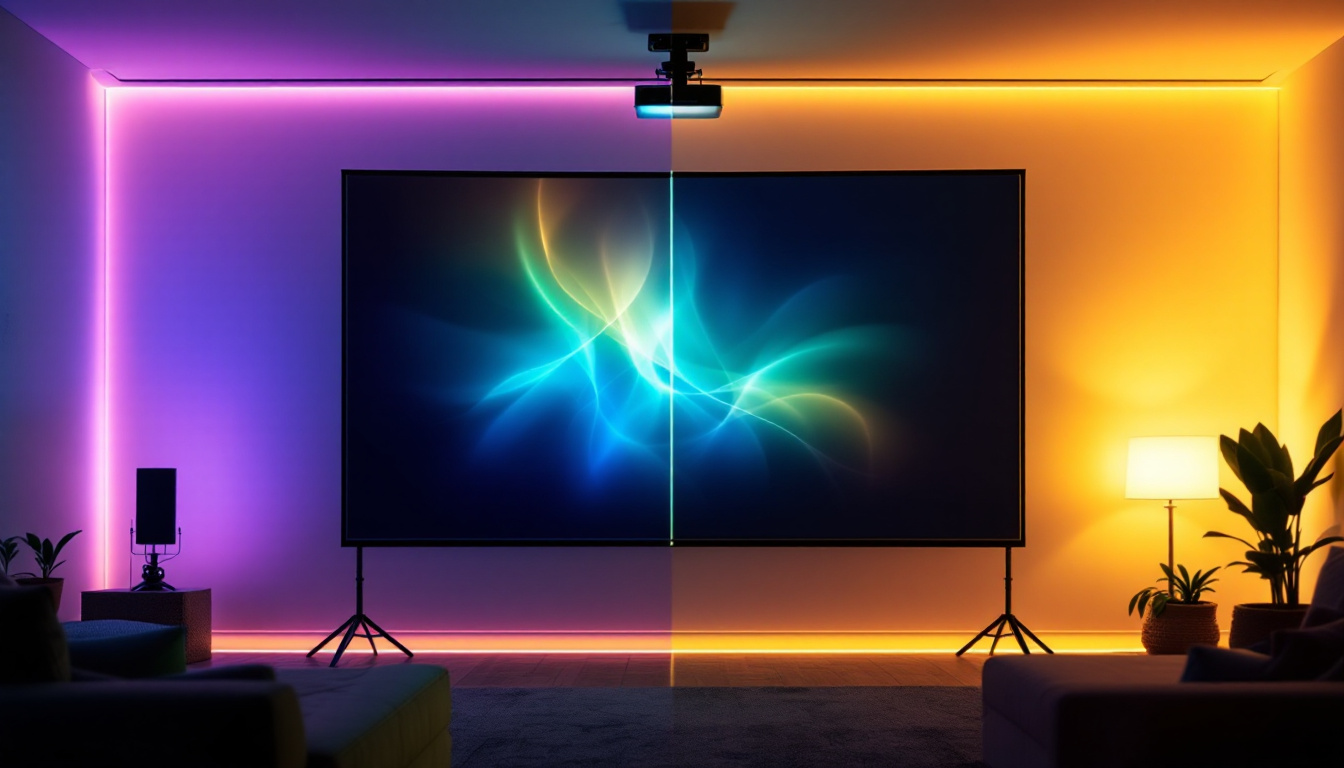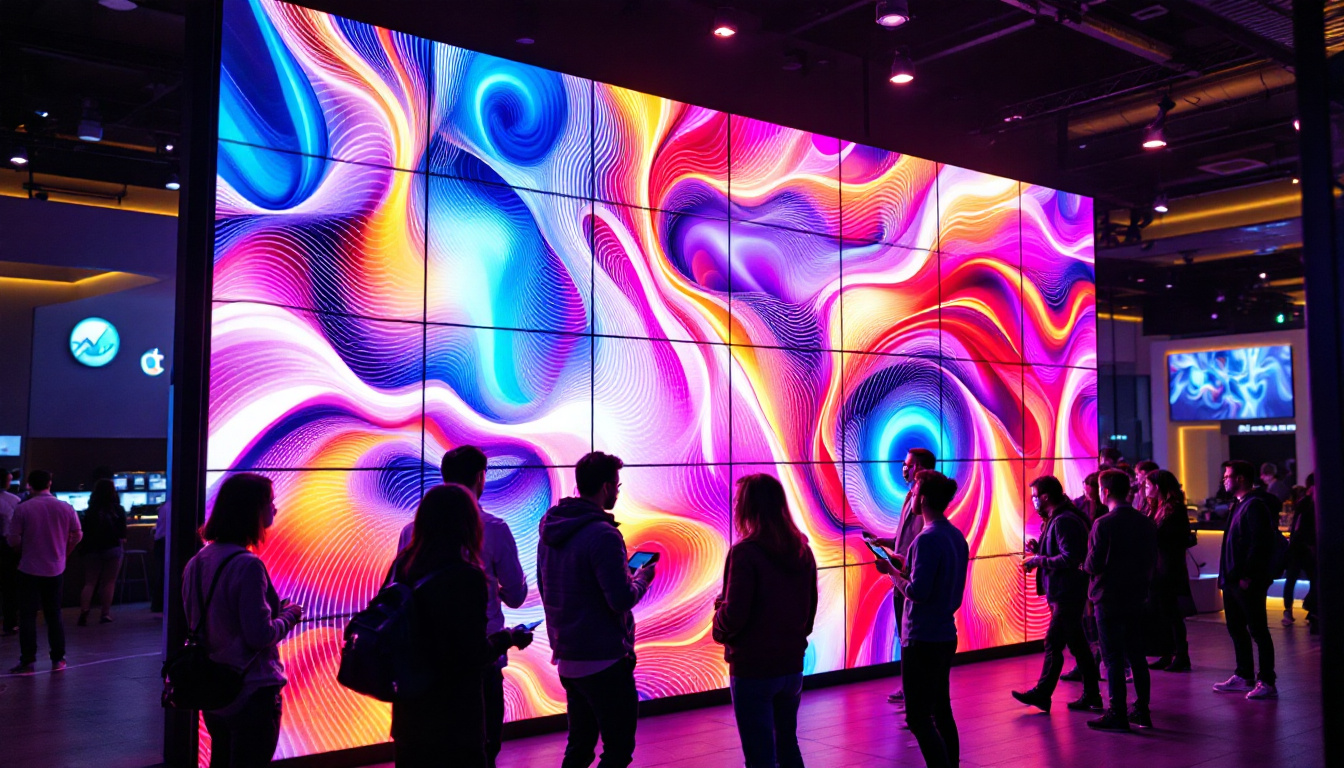How Do LCD Monitors Work: LED Display Explained
In the realm of modern technology, LCD (Liquid Crystal Display) monitors have become ubiquitous, serving as the primary display technology for computers, televisions, and various devices. Understanding how these monitors work not only enhances appreciation for the technology but also aids in making informed decisions when purchasing or troubleshooting these devices. This article delves into the intricate workings of LCD monitors, with a special focus on LED (Light Emitting Diode) displays, which have revolutionized the industry.
The Basics of LCD Technology
At its core, an LCD monitor operates by manipulating light to create images. Unlike traditional cathode ray tube (CRT) monitors, which rely on electron beams and phosphorescent screens, LCDs use liquid crystals sandwiched between layers of glass or plastic. This section will explore the fundamental principles behind LCD technology.
Liquid Crystals: The Heart of LCDs
Liquid crystals are substances that exhibit properties between those of liquids and solid crystals. They can change their orientation when an electric current is applied, which allows them to control the passage of light. In an LCD monitor, these liquid crystals are aligned in a specific manner, enabling them to either block or allow light to pass through.
When no electric current is applied, the liquid crystals are in a relaxed state, allowing light to pass through. However, when a voltage is applied, the crystals realign, altering the light’s path. This manipulation of light is what ultimately creates the images seen on the screen. The precision of this alignment is crucial, as even minor deviations can lead to color distortion or image blurriness, which is why advancements in liquid crystal technology continue to be a focal point for manufacturers aiming to enhance display quality.
The Structure of an LCD Monitor
An LCD monitor consists of several key components, including the backlight, liquid crystal layer, and polarizers. The backlight, typically made up of fluorescent tubes or LEDs, provides the necessary illumination for the display. The polarizers are crucial as they filter the light before and after it passes through the liquid crystal layer, ensuring that only the desired wavelengths reach the viewer’s eyes.
Each pixel on the screen is made up of subpixels, usually in red, green, and blue (RGB) configurations. By adjusting the intensity of each subpixel, a wide range of colors can be produced, allowing for vibrant and detailed images. This RGB combination is fundamental to color reproduction, and modern LCDs often employ advanced techniques such as dithering and color management systems to further enhance the accuracy of the displayed images. Additionally, many high-end LCD monitors now incorporate technologies like wide color gamut and HDR (High Dynamic Range) to provide even more lifelike visuals, making them ideal for professional graphic design and gaming applications.
Moreover, the advancements in LCD technology have led to the development of various types of displays, such as IPS (In-Plane Switching) and TN (Twisted Nematic) panels, each with its own strengths and weaknesses. IPS panels are renowned for their superior color accuracy and wider viewing angles, while TN panels are often favored for their faster response times, making them popular among competitive gamers. Understanding these differences is essential for consumers looking to choose the right monitor for their specific needs, whether it be for casual use, professional work, or immersive gaming experiences.
Understanding LED Displays
LED displays are a type of LCD monitor that uses light-emitting diodes as the backlight instead of traditional fluorescent tubes. This advancement has led to significant improvements in display quality, energy efficiency, and overall performance. This section will delve deeper into the specifics of LED displays and their advantages.
Types of LED Backlighting
There are primarily two types of LED backlighting used in LCD monitors: edge-lit and full-array. Edge-lit LED displays have LEDs positioned along the edges of the screen, which allows for a thinner design. However, this can sometimes result in uneven brightness across the display.
On the other hand, full-array LED backlighting features a grid of LEDs behind the entire screen. This setup allows for more uniform brightness and improved contrast ratios, as the LEDs can be dimmed or turned off in specific areas to enhance black levels. This technology is particularly beneficial for viewing high-definition content.
Benefits of LED Displays
LED displays offer several advantages over traditional LCDs with fluorescent backlighting. One of the most notable benefits is energy efficiency. LED backlights consume less power, leading to lower electricity bills and a reduced carbon footprint.
Moreover, LED displays can achieve higher brightness levels, making them suitable for use in well-lit environments. The improved color accuracy and wider color gamut also contribute to a more immersive viewing experience, whether for gaming, graphic design, or watching movies.
In addition to these benefits, LED technology has also paved the way for advancements such as HDR (High Dynamic Range) imaging. HDR allows for a greater range of colors and contrasts, enabling viewers to see details in both the brightest and darkest parts of an image. This is particularly advantageous for filmmakers and content creators who strive for visual fidelity. Furthermore, the longevity of LED displays is another significant advantage; they typically last longer than traditional displays, reducing the need for frequent replacements and contributing to a more sustainable approach to technology consumption.
Another aspect worth mentioning is the versatility of LED displays. They are not limited to just televisions and computer monitors; they are also widely used in digital signage, advertising boards, and even in automotive displays. This adaptability has made LED technology a preferred choice across various industries, enhancing visibility and engagement in public spaces. As technology continues to evolve, we can expect even more innovative applications of LED displays, further solidifying their place in our daily lives.
How LCD Monitors Create Images
The process of image creation in LCD monitors involves several steps, from the initial signal received by the monitor to the final image displayed on the screen. Understanding this process can clarify how various factors affect image quality.
Signal Processing
When a computer or device sends a signal to the monitor, it is typically in the form of digital data. The monitor’s internal circuitry processes this data, converting it into an analog signal that can be understood by the liquid crystal layer. This conversion is essential for accurately displaying images on the screen.
Once the signal is processed, the monitor determines how much voltage to apply to each pixel, controlling the orientation of the liquid crystals and, consequently, the amount of light that passes through. This precise manipulation allows for the creation of detailed images with varying colors and brightness levels.
Refresh Rate and Response Time
Two critical factors that influence the performance of an LCD monitor are refresh rate and response time. The refresh rate, measured in hertz (Hz), indicates how many times the image on the screen is updated per second. A higher refresh rate results in smoother motion, which is particularly important for gaming and fast-paced video content.
Response time, on the other hand, measures how quickly a pixel can change from one color to another. A lower response time reduces motion blur and ghosting effects, enhancing the overall viewing experience. Monitors with high refresh rates and low response times are ideal for gamers and professionals who require precise image rendering.
Common Applications of LCD Monitors
LCD monitors are versatile and find applications across various fields, from personal computing to professional environments. This section will explore some of the most common uses of LCD technology.
Personal Computing
In the realm of personal computing, LCD monitors are the standard choice for desktops and laptops. Their lightweight design, energy efficiency, and ability to produce high-quality images make them ideal for everyday tasks such as browsing the internet, working on documents, and streaming videos.
Moreover, advancements in LCD technology have led to the development of ultra-thin monitors with high resolutions, catering to users who demand exceptional visual clarity for graphic design, video editing, and gaming.
Professional Use in Design and Media
Professionals in fields such as graphic design, photography, and video production often rely on high-end LCD monitors with superior color accuracy and resolution. These monitors enable precise editing and color grading, ensuring that the final product meets industry standards.
Additionally, many creative professionals opt for monitors with wide color gamuts and HDR (High Dynamic Range) capabilities, which enhance the depth and vibrancy of images, making them ideal for visual storytelling.
Future Trends in LCD Technology
As technology continues to evolve, so does the landscape of LCD monitors. Emerging trends and innovations are shaping the future of display technology, promising even more advanced features and capabilities. This section will highlight some of the anticipated trends in LCD technology.
Higher Resolutions and Refresh Rates
The demand for higher resolutions, such as 4K and 8K, is on the rise, driven by the increasing availability of high-definition content and advancements in gaming technology. LCD monitors are adapting to meet these demands, offering higher pixel densities that provide sharper images and more detail.
Alongside higher resolutions, manufacturers are also focusing on increasing refresh rates. Monitors with refresh rates exceeding 144Hz are becoming more common, catering to gamers who seek the smoothest possible experience during gameplay.
Integration of Smart Features
Another trend is the integration of smart features into LCD monitors. As users seek more functionality, manufacturers are incorporating features such as built-in streaming capabilities, voice control, and connectivity options that allow for seamless integration with other smart devices.
This shift towards smart displays not only enhances user experience but also opens up new possibilities for how monitors can be used in homes and workplaces.
Conclusion
LCD monitors, particularly those utilizing LED backlighting, have transformed the way we interact with technology. Their ability to produce vibrant images with energy efficiency makes them a popular choice across various applications. Understanding the underlying principles of how these monitors work can empower users to make informed decisions and appreciate the technology that has become an integral part of daily life.
As advancements continue to shape the future of LCD technology, users can look forward to even more innovative features and improved performance. Whether for personal use or professional applications, LCD monitors will undoubtedly remain a cornerstone of visual display technology for years to come.
Discover the Future of Visual Display with LumenMatrix
As you’ve explored the intricacies of LCD and LED display technologies, it’s clear that the future of visual communication is bright and full of potential. Embrace the cutting-edge advancements with LumenMatrix, a pioneer in LED display solutions. From captivating Indoor and Outdoor LED Wall Displays to innovative options like Vehicle LED Displays and LED Sports Displays, LumenMatrix is committed to revolutionizing the way businesses and brands connect with their audience. Experience the transformative power of LED technology and let your message shine with unparalleled clarity and impact. Check out LumenMatrix LED Display Solutions today and step into a world where visual experiences are redefined.































